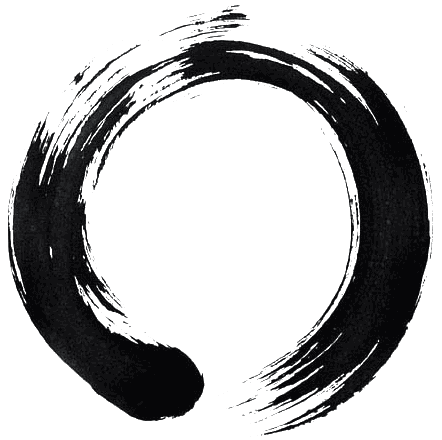Life is full of symbols. Little reminders that tell you how to live, what’s important, and why you do what you do. There are many examples of such symbols all around us. One of my personal favorites being memento mori, which reminds you that death is coming. Morbid? Sure, but certainly effective.
I recently came across another symbol that is just as intriguing: ensō.
Ensō is a disciplined creative practice of Japanese ink painting, often done by artists, calligraphers, and creators. Before they begin any work, they draw a quick circle in a fluid, expressive stroke. Once it’s drawn, there is no changing it. It is permanent, no matter how it looks and it serves as a representation of the creator in that moment of time.
From the artist perspective, the symbolism for perfection makes sense, as the circle signifies unity and completion. Perfect balance. What makes the ensō more intriguing is that it is not perfect at all. It is rough, messy, and at times not even complete.
In fact the premise of the ensō is multifaceted. When closed, it can represent perfection, closely resembling a circle, and relating to ideals of symmetry, balance, and mastery. On the other hand, it may be open, as it often is, which takes on an entirely new meaning. In this form, it exemplifies movement and progress towards perfection, even if it is not attainable. It is a simple reminder that imperfection is beauty, an idea closely related to kintsugi.
Based on the technique used to create ensō, the fast and fluid brushstroke, it would appear that the goal is to remember the beauty of imperfection over all else.
You may recognize the shape. It has been used throughout history, in logos, designs, and even book covers. In fact, two of the more popular books of our time celebrate the idea of ensō.
Joseph Campbell’s book, The Hero with a Thousand Faces, has an ensō that exemplifies creativity and freedom of expression within the world of literature. It is also found on the cover of The Lean Startup by Eric Ries, where it symbolizes a constant cycle of learning that is never ending.
 Of course you don’t have to be a calligrapher or artist to take advantage of it. Ensō is an important reminder in all endeavors. From writing to business to learning, remembering that imperfection is beautiful can give us the freedom to create without inhibition. It lifts the weight off of your shoulders and let’s you make without worry or care.
Of course you don’t have to be a calligrapher or artist to take advantage of it. Ensō is an important reminder in all endeavors. From writing to business to learning, remembering that imperfection is beautiful can give us the freedom to create without inhibition. It lifts the weight off of your shoulders and let’s you make without worry or care.
In this way, the practice of ensō can serve as a daily ritual or spiritual practice used to remind yourself of this simple message. Perfect may be our ambition, but it is not the goal. We are always improving and growing.
I’ve started using it in my own writing practice. When I sit down to start writing every day, I draw a quick ensō on my notepad, to signify both the start of this process of creation and to ease the pressure that making often comes with.
The ensō contains the perfect and imperfect; that is why it is always complete.KAZUAKI TANAHASHI
This simply mark can prime your mind and put you in the right head space for creation, no matter the domain. It’s not about how it looks, but what it means.
As creators, we should celebrate imperfections, embrace them. The ups and downs, the twists and turns, nothing is ever perfect. Be comfortable with this truth and give yourself the freedom to create.
Image via flickr
